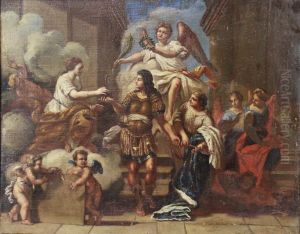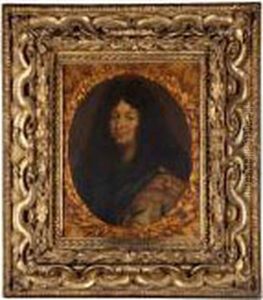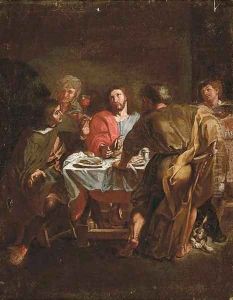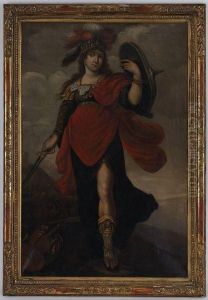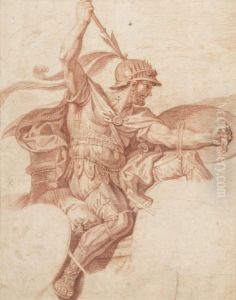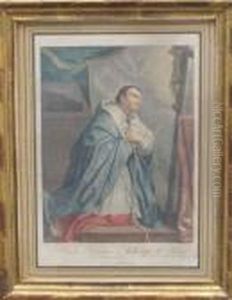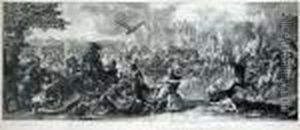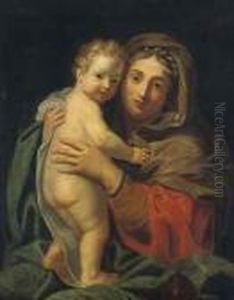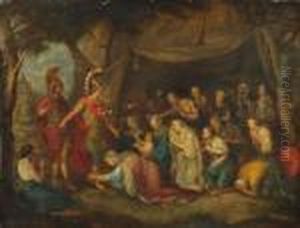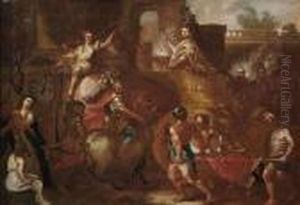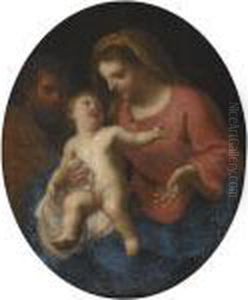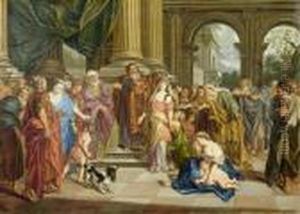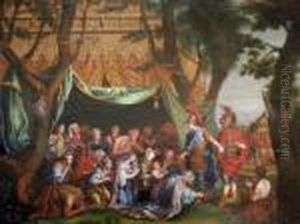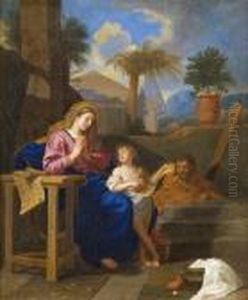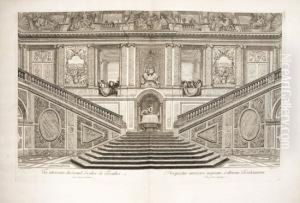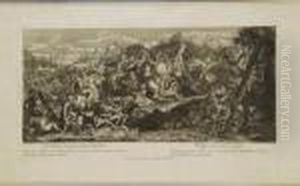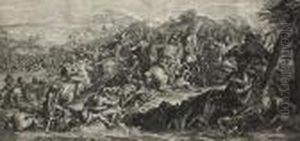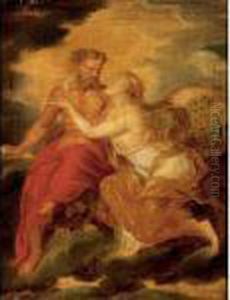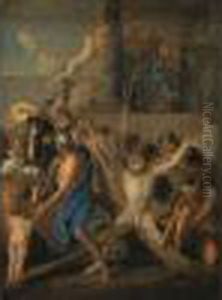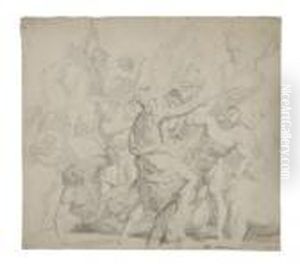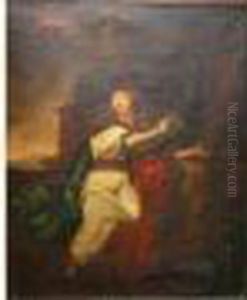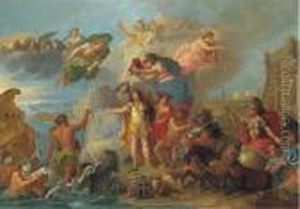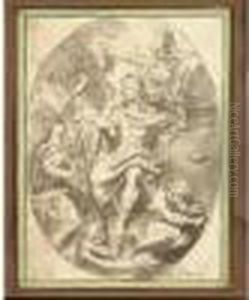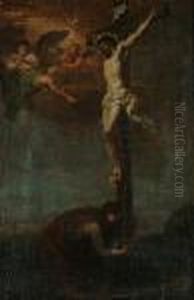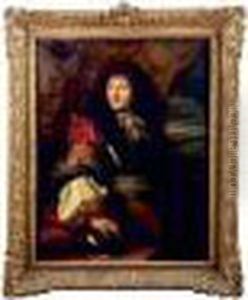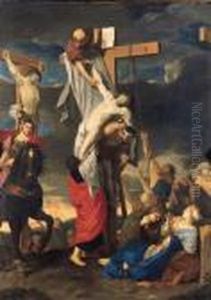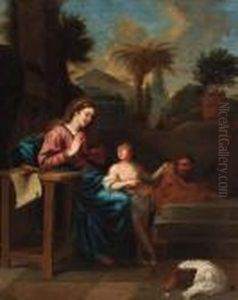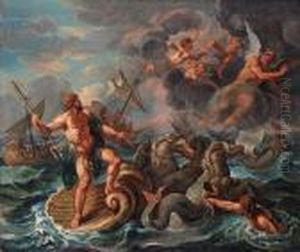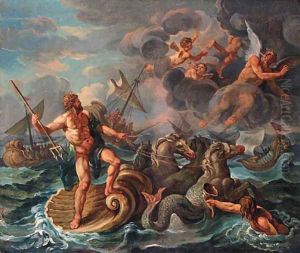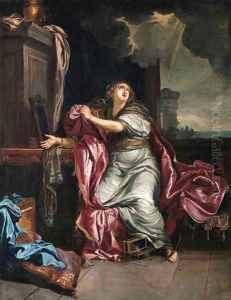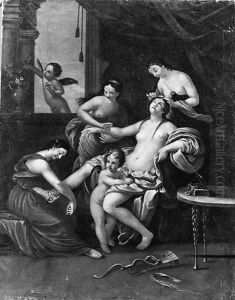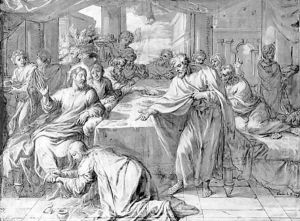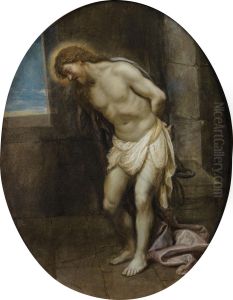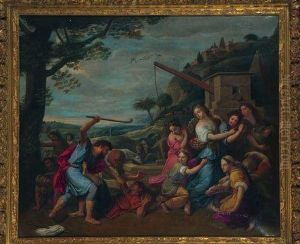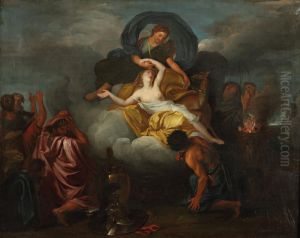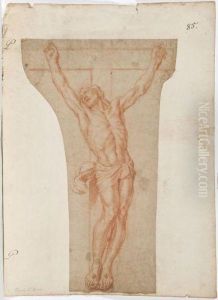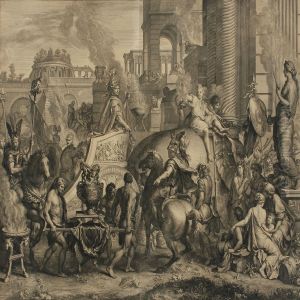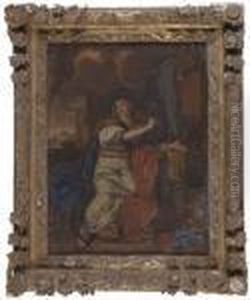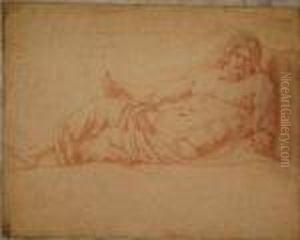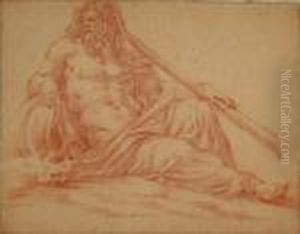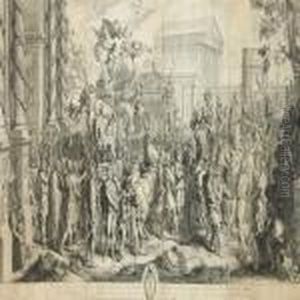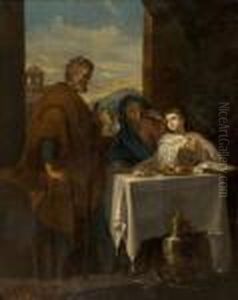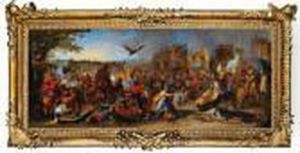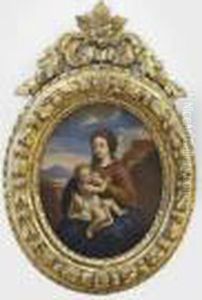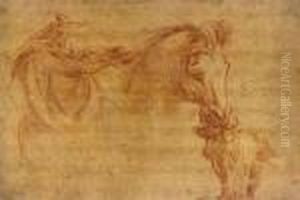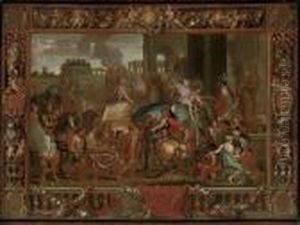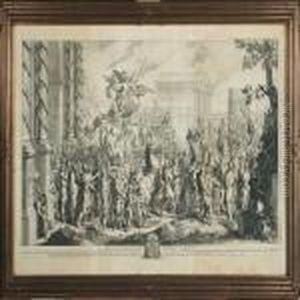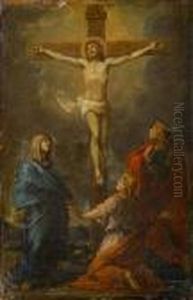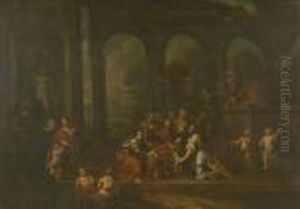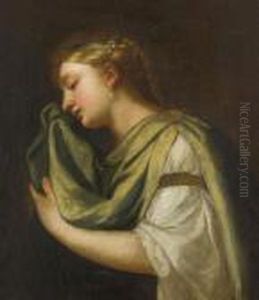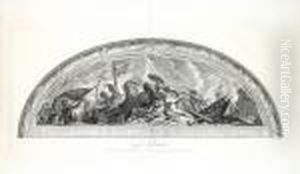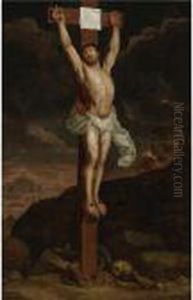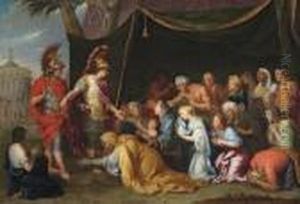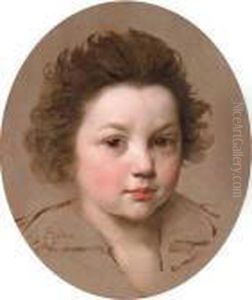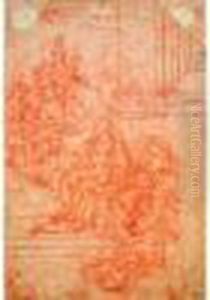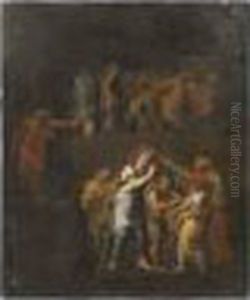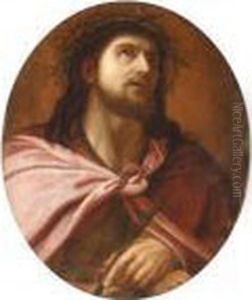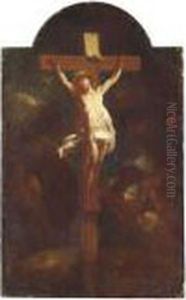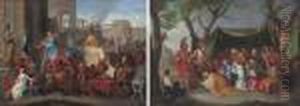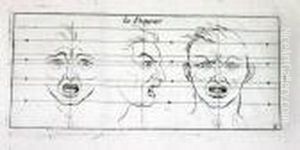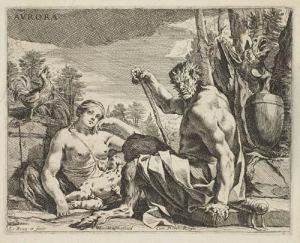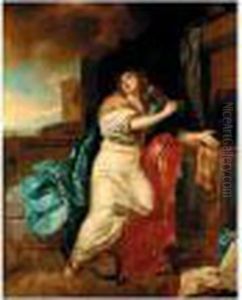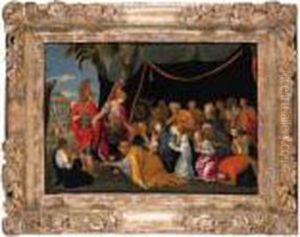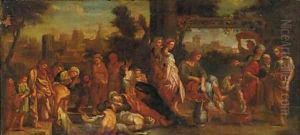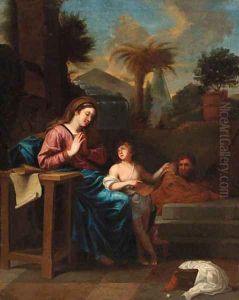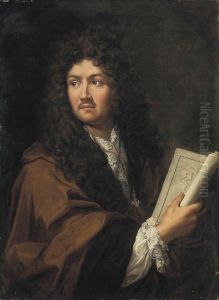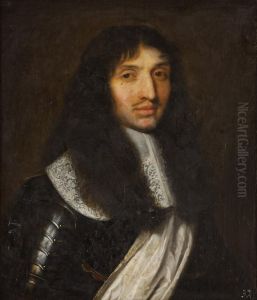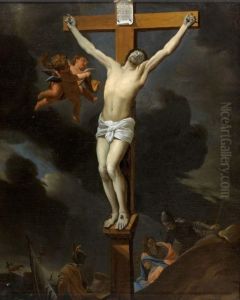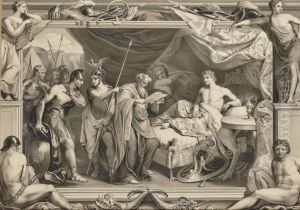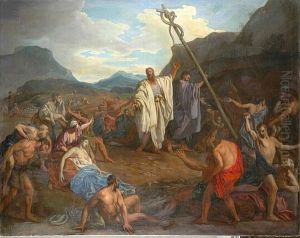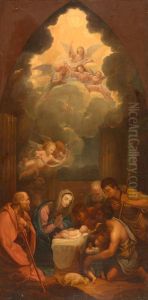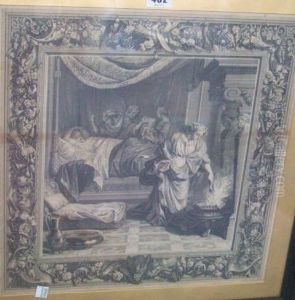Charles Lebrun Paintings
Charles Lebrun was a dominant figure in 17th-century French art and a pivotal force in establishing the French Baroque and Classicist style. Born on February 24, 1619, in Paris, France, Lebrun was trained by his father, a sculptor, before entering the studio of François Perrier, an artist known for his classical style. He later studied under Simon Vouet, a leading French painter of the time, which greatly influenced his artistic development.
Lebrun's talent was recognized early on by the Chancellor of France, who provided him with a stipend to study in Rome in 1642. There, he was deeply influenced by the works of the Italian masters, particularly the paintings of Raphael and the Carracci family. After returning to France in 1646, Lebrun quickly rose to prominence and became a favorite of the French court.
In 1661, Lebrun was appointed First Painter to King Louis XIV and given the task of decorating the royal residences, including the Palace of Versailles. His work at Versailles, including the grandiose Hall of Mirrors, solidified his status as the leading artist in France. Lebrun established the Gobelins Manufactory, which produced tapestries, furniture, and other luxury items for the crown, further centralizing artistic production under his control.
Lebrun was a co-founder and the first director of the Royal Academy of Painting and Sculpture in 1648. His lectures on art theory and practice were highly influential, and his ideas on the hierarchy of genres in art and the use of art to express the grandeur of the monarch had lasting effects on French artistic doctrine.
Throughout his career, Lebrun was not only a painter but also a designer of tapestries, a decorator, and an art theorist. His style combined classical elements with the grandiosity and drama of the Baroque. He had a talent for organizing large-scale artistic projects and for integrating various arts into a coherent whole, which was particularly seen in his work for Versailles.
Charles Lebrun's legacy includes a large number of paintings, drawings, and decorative schemes that have left a significant imprint on the history of French art. His ability to work across different media and his role in shaping the artistic policy of the French court make him an essential figure in the study of Baroque art. Lebrun died on February 22, 1690, in Paris, leaving behind a rich body of work that continued to influence European art well into the 18th century.
